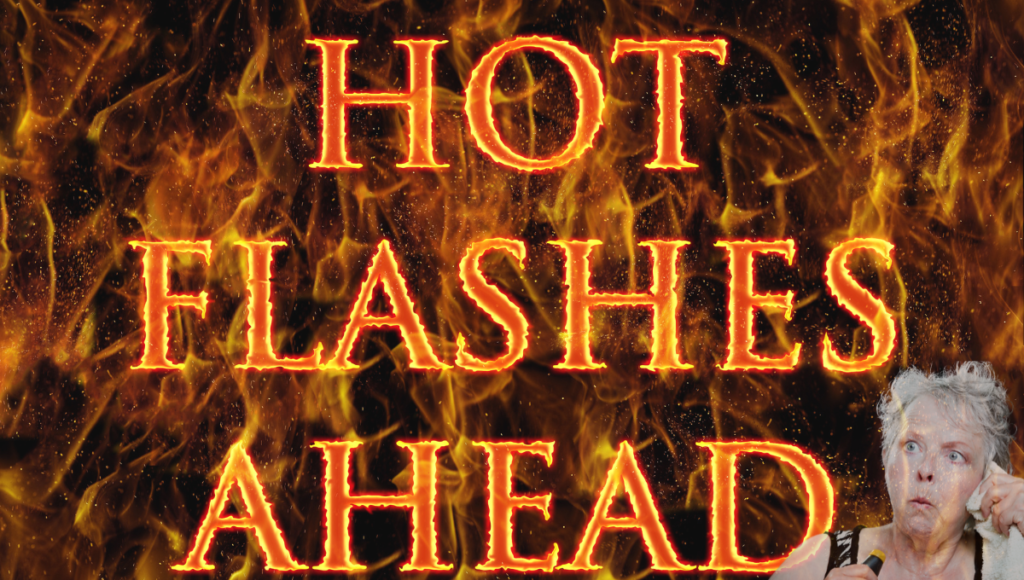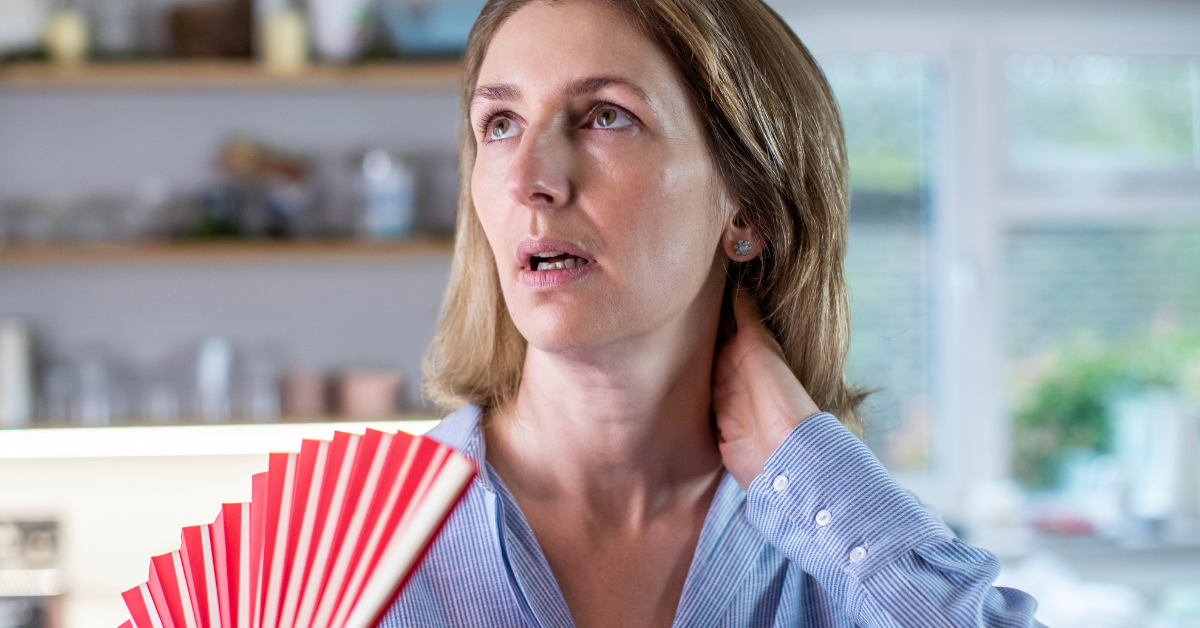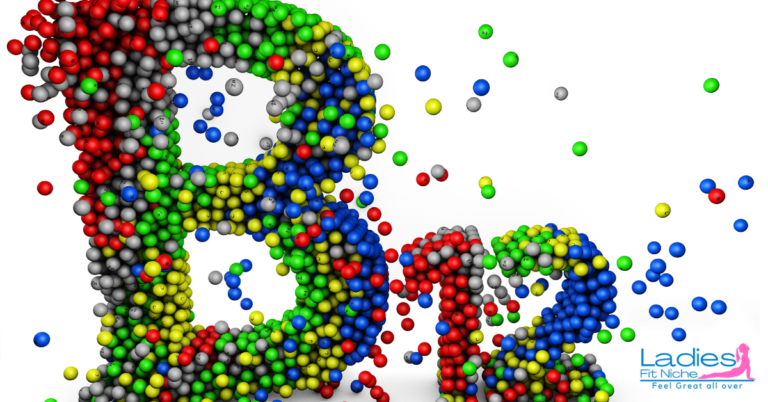Hot Flash Menopause Symptoms: Understanding Heat Surges and Finding Relief
Hot flashes are a common and often bothersome symptom experienced by women during menopause. They are characterized by sudden and intense feelings of heat that spread throughout the body, often accompanied by sweating and flushing of the skin. These episodes can last from a few seconds to several minutes and can occur multiple times a day or night. Hot flashes are primarily associated with the hormonal changes that occur during menopause, specifically the decline in estrogen levels.
During menopause, the ovaries produce less estrogen, which disrupts the body’s thermoregulation process. This leads to the dilation of blood vessels and triggers the body’s cooling mechanisms, causing the characteristic heat and sweating associated with hot flashes. While the exact cause of hot flashes is not fully understood, hormonal fluctuations are believed to play a significant role.
Understanding and managing hot flashes is crucial for women going through menopause. These symptoms can significantly impact daily life, disrupt sleep, and affect overall well-being. By recognizing the signs of hot flashes and implementing strategies to minimize their occurrence and intensity, women can better navigate this transitional phase with greater comfort and quality of life.
In the following sections, we will delve deeper into the science behind hot flashes, explore their signs and symptoms, and discuss effective coping strategies and treatment options to help women find relief and manage this common menopause symptom.
What Are Hot Flashes?

Hot flashes are a common and disruptive symptom experienced by women going through menopause. They are characterized by a sudden and intense sensation of heat that spreads throughout the body, often accompanied by flushing of the skin and excessive sweating. Hot flashes can vary in intensity and duration from woman to woman.
During a hot flash, a woman may experience a rapid increase in body temperature, causing discomfort and sometimes embarrassment. The sensation of heat can be particularly intense in the face, neck, and chest areas. Flushing of the skin, often resulting in a reddened appearance, is a noticeable characteristic of hot flashes.
The duration and frequency of hot flashes can also vary. Some women may experience brief episodes that last only a few seconds, while others may endure longer episodes that can extend up to several minutes. The frequency of hot flashes can range from a few per week to multiple episodes throughout the day.
It’s important to note that hot flashes can occur both during the day and at night, leading to disrupted sleep patterns and night sweats. The frequency and severity of hot flashes tend to peak during the perimenopausal and early postmenopausal stages, gradually decreasing over time.
Understanding the physical sensations, duration, and frequency of hot flashes is essential for women navigating menopause. In the following sections, we will explore the science behind hot flashes, their triggers, and effective strategies for managing and finding relief from this common menopause symptom.
The Science Behind Hot Flashes
Hot flashes are a complex phenomenon that involves various hormonal, neurological, and vascular changes in the body. Understanding the science behind hot flashes can provide valuable insights into their causes and potential management strategies.
Hormonal changes and the role of estrogen in hot flashes
Hormonal changes, particularly a decline in estrogen levels, play a significant role in the occurrence of hot flashes. Estrogen is involved in regulating body temperature, and its decline during menopause disrupts the body’s thermoregulatory system, leading to temperature dysregulation and hot flashes.
Click here to learn more about What Happens to Estrogen Levels During Menopause
The hypothalamus and its connection to thermoregulation
The hypothalamus, a region in the brain responsible for maintaining homeostasis, plays a crucial role in thermoregulation. It acts as the body’s thermostat, sensing changes in body temperature and triggering appropriate responses to maintain balance. During menopause, the hypothalamus becomes more sensitive to small fluctuations in body temperature, leading to an overactive response and the onset of hot flashes.
Vasomotor instability and the dilation of blood vessels
Hot flashes involve vasomotor instability, which refers to the instability of blood vessels in the body. When a hot flash occurs, the blood vessels near the skin’s surface dilate, causing increased blood flow and heat sensation. This dilation contributes to the sudden waves of warmth experienced during a hot flash.
Triggers and factors that can exacerbate hot flashes
Hot flashes can be triggered or exacerbated by various factors, including certain foods and beverages (such as spicy foods and caffeine), alcohol consumption, stress, smoking, and heat. Identifying individual triggers can help women manage and reduce the frequency and intensity of hot flashes.
By understanding the hormonal, neurological, and vascular changes involved in hot flashes, researchers and healthcare professionals can develop targeted interventions and strategies to alleviate hot flash symptoms. In the next section, we will explore the signs and symptoms of hot flashes in more detail, along with practical approaches for managing and finding relief from this menopausal symptom.
Signs and Symptoms of Hot Flashes
Hot flashes are a distinctive symptom experienced by many women during menopause. Recognizing the signs and symptoms can help individuals understand and manage this common occurrence.
Identifying the common signs and symptoms of hot flashes
Hot flashes typically present with the following signs and symptoms:
- Sudden sensation of heat: Individuals may feel an intense, momentary warmth spreading throughout their body, most commonly in the upper body and face.
- Flushing of the skin: The skin may become red or blotchy, particularly on the face, neck, and chest.
- Excessive sweating: Profuse sweating often accompanies a hot flash, leading to dampness or perspiration on the body.
- Rapid heartbeat: Some individuals may experience a temporary increase in heart rate during a hot flash.
Differentiating hot flashes from other conditions
It’s important to distinguish hot flashes from other conditions that may cause similar symptoms. Hot flashes can be characterized by their sudden onset and brief duration, typically lasting from a few seconds to several minutes. Other conditions, such as fever or panic attacks, may present with similar symptoms but have different underlying causes.
Variations in intensity and duration of hot flashes
Hot flashes can vary in intensity and duration from person to person. Some individuals may experience mild and infrequent hot flashes, while others may have more frequent and severe episodes. The frequency and intensity of hot flashes can also change over time. It is important to note that hot flashes are a normal part of the menopausal transition, and the experience can differ greatly among individuals.
Understanding the signs and symptoms of hot flashes can assist individuals in identifying and managing this common menopausal symptom. In the next section, we will explore the impact of hot flashes on physical, emotional, and social aspects of a person’s life, along with coping strategies for finding relief.
Understanding the Impact of Hot Flashes
Hot flashes, a common symptom experienced during menopause, can have various impacts on a woman’s life. It is important to recognize and understand the potential consequences of frequent hot flashes.
Physical, emotional, and social consequences of frequent hot flashes
Frequent hot flashes can have significant physical, emotional, and social effects on individuals. Some of the consequences may include:
- Physical discomfort: Hot flashes can cause sweating, flushing, and a sudden sensation of heat, leading to physical discomfort and sometimes embarrassment.
- Sleep disturbances: Hot flashes that occur during sleep can disrupt sleep patterns, resulting in sleep disturbances such as insomnia, night waking, or restless sleep. This can lead to daytime tiredness, fatigue, and a decrease in overall well-being.
- Impact on daily activities: The unpredictability and intensity of hot flashes can interfere with daily activities. Individuals may need to pause or interrupt tasks, affecting productivity and causing frustration.
- Work and relationships: Hot flashes can impact work performance and relationships. Concentration difficulties, irritability, and mood swings associated with hot flashes can affect productivity, communication, and overall well-being.
Learn more about the link between Menopause and mental health
Sleep disturbances and the effects on overall well-being
Sleep disturbances resulting from hot flashes can have a significant impact on overall well-being. Lack of quality sleep can lead to fatigue, irritability, difficulty concentrating, and reduced cognitive function. It may also affect mood, emotional stability, and mental health. Adequate sleep is crucial for physical and emotional restoration, so addressing sleep disturbances caused by hot flashes is important for maintaining well-being.
Impact on daily activities, work, and relationships
The disruptive nature of hot flashes can affect various aspects of daily life. Individuals may need to adjust their routines, dress in layers to manage temperature fluctuations, or avoid certain situations that could trigger hot flashes. These modifications may impact personal, professional, and social activities.
In the next section, we will explore coping strategies for managing hot flashes, including lifestyle adjustments, medical treatments, and self-care practices. Understanding the impact of hot flashes is an essential step in developing effective strategies to alleviate their effects and improve overall quality of life.
Coping Strategies for Hot Flashes
Hot flashes can be managed effectively through various coping strategies. By making certain lifestyle modifications and incorporating dietary adjustments, women experiencing hot flashes can find relief and improve their overall well-being.
Lifestyle Modifications
- Dressing in layers and choosing breathable fabrics: Wearing lightweight, loose-fitting clothing made from natural fibers such as cotton or linen can help regulate body temperature and minimize discomfort during hot flashes. Layering allows for easy adjustment as needed.
- Managing room temperature and using fans or air conditioning: Keeping the environment cool can help alleviate hot flashes. Setting the thermostat to a lower temperature, using fans or air conditioning, and opening windows for ventilation can provide relief.
- Practicing stress-reducing techniques and relaxation exercises: Stress and anxiety can trigger or intensify hot flashes. Engaging in activities such as deep breathing exercises, meditation, yoga, or mindfulness can help reduce stress levels and promote relaxation.
- Engaging in regular exercise and maintaining a healthy weight: Regular physical activity, such as brisk walking, swimming, or cycling, can help regulate hormone levels and reduce the frequency and severity of hot flashes. Maintaining a healthy weight through exercise and a balanced diet is also beneficial.
Click here to learn more about other menopause symptoms
Dietary Adjustments
- Avoiding triggers such as spicy foods, caffeine, and alcohol: Certain foods and beverages can trigger hot flashes or make them more intense. Spicy foods, caffeine, alcohol, and hot beverages should be avoided or minimized to reduce the frequency and severity of hot flashes.
- Incorporating phytoestrogen-rich foods into the diet: Phytoestrogens are plant-based compounds that mimic the effects of estrogen in the body. Including foods such as soy products, flaxseeds, whole grains, fruits, and vegetables in the diet can help balance hormone levels and alleviate hot flashes.
- Importance of hydration and drinking cool beverages: Staying hydrated is essential for managing hot flashes. Drinking plenty of water and other cool beverages can help regulate body temperature and minimize the intensity of hot flashes.
- Considering dietary supplements and herbal remedies: Some women find relief from hot flashes by using dietary supplements or herbal remedies. However, it’s important to consult with a healthcare provider before taking any supplements to ensure safety and effectiveness.
By implementing these coping strategies, women experiencing hot flashes can effectively manage their symptoms and improve their quality of life during the menopausal transition.
It’s important to remember that each individual’s experience may vary, so finding the strategies that work best for you is key.
In the next section, we will explore additional approaches, including hormone replacement therapy and alternative therapies, to provide a comprehensive understanding of coping with hot flashes.
Click here to learn more about healthy eating for menopause wellness
Medical Interventions for Hot Flashes

Hot flashes can significantly impact a woman’s quality of life during menopause. While lifestyle modifications and natural remedies can provide relief for some women, others may require medical interventions to manage their hot flashes effectively.
Medical interventions for hot flashes include hormone replacement therapy (HRT), non-hormonal medications, and alternative treatments. It’s important to consult with a healthcare provider to determine the most suitable approach based on individual needs and medical history.
A. Hormone Replacement Therapy (HRT)
Hormone replacement therapy involves the use of medications that contain estrogen and progesterone to supplement the declining hormone levels during menopause. HRT is available in various forms, including pills, patches, creams, gels, and vaginal rings. It can effectively alleviate hot flashes, night sweats, vaginal dryness, and mood swings. However, it’s essential to discuss the potential benefits and risks of HRT with a healthcare provider.
Different types of HRT exist, such as estrogen-only therapy for women who have undergone a hysterectomy and combination therapy for women with an intact uterus.
The benefits of HRT include symptom relief, improvement in bone density, and reduction in the risk of fractures. However, HRT may also have risks, such as an increased risk of blood clots, stroke, breast cancer, and cardiovascular disease.
Eligibility criteria for HRT vary, and the decision to use HRT should be made in consultation with a healthcare provider.
B. Medications and Other Treatments for Hot Flashes and Heat Surge relief
For women who cannot or prefer not to use hormone replacement therapy, non-hormonal medications may be recommended to manage hot flashes.
Antidepressants, such as selective serotonin reuptake inhibitors (SSRIs) and serotonin-norepinephrine reuptake inhibitors (SNRIs), have been shown to reduce the frequency and severity of hot flashes. Anti-seizure medications, such as gabapentin and pregabalin, and certain blood pressure medications, like clonidine, may also provide relief.
In addition to medications, alternative treatments can be explored. Acupuncture, a traditional Chinese medicine practice, involves the insertion of thin needles into specific points on the body to alleviate symptoms. Some women find acupuncture helpful in reducing the frequency and intensity of hot flashes. Hypnosis, relaxation techniques, and cognitive behavioral therapy (CBT) may also offer relief by addressing the psychological aspects of hot flashes.
It’s important to note that the effectiveness of these medications and alternative treatments may vary among individuals. A healthcare provider can provide guidance on suitable options based on medical history, symptoms, and personal preferences.
In conclusion, medical interventions for hot flashes include hormone replacement therapy, non-hormonal medications, and alternative treatments.
Hormone replacement therapy can effectively alleviate symptoms but comes with potential risks that should be discussed with a healthcare provider.
Non-hormonal medications and alternative treatments offer alternatives for women who cannot or prefer not to use HRT.
Consulting with a healthcare provider is crucial to determine the most appropriate approach for managing hot flashes based on individual needs and considerations.
Natural Remedies and Complementary Therapies

Natural remedies and complementary therapies offer alternative approaches for managing hot flashes during menopause. While the effectiveness of these remedies may vary among individuals, many women find them helpful in reducing the frequency and severity of hot flashes. It’s important to note that before trying any natural remedies or complementary therapies, it’s advisable to consult with a healthcare professional to ensure their safety and suitability.
Effectiveness and Safety of Natural Remedies
Natural remedies have gained popularity as a way to alleviate menopause symptoms, including hot flashes. While scientific evidence supporting their effectiveness is limited, many women report experiencing relief through their use. Some commonly used natural remedies for hot flashes include:
- Herbal Supplements: Certain herbs, such as black cohosh, red clover, and dong quai, are believed to have estrogen-like effects on the body and may help reduce hot flashes. However, it’s important to note that the effectiveness and safety of these supplements vary, and potential interactions with medications should be considered.
- Mind-Body Techniques: Mind-body techniques like yoga, meditation, deep breathing, and mindfulness practices can promote relaxation, reduce stress, and improve overall well-being. These practices may help manage hot flashes by reducing anxiety and enhancing self-awareness.
Acupuncture, Biofeedback, and Other Complementary Therapies
Complementary therapies offer additional options for managing hot flashes during menopause. These therapies aim to address the underlying imbalances in the body and promote holistic well-being. Some examples include:
- Acupuncture: Acupuncture, a traditional Chinese medicine practice, involves the insertion of thin needles into specific points on the body. It is believed to help balance energy flow and alleviate various symptoms, including hot flashes. Many women find acupuncture helpful in reducing the frequency and intensity of hot flashes.
- Biofeedback: Biofeedback is a technique that helps individuals gain voluntary control over certain bodily processes. It involves using sensors to provide feedback on physiological responses, such as heart rate or skin temperature. By learning to control these responses, some women have reported a reduction in the frequency and severity of hot flashes.
- Other Complementary Therapies: Additional complementary therapies that women may explore include aromatherapy, which involves using essential oils for relaxation and symptom relief, and hypnosis, which uses guided imagery and suggestions to promote relaxation and well-being.
It’s important to approach natural remedies and complementary therapies with caution and under the guidance of a healthcare professional. While these approaches may offer relief for some women, their effectiveness can vary, and individual responses may differ. Additionally, potential interactions with medications or underlying health conditions should be considered.
In conclusion, natural remedies and complementary therapies can be considered as alternative approaches for managing hot flashes during menopause. Herbal supplements, mind-body techniques, acupuncture, biofeedback, and other complementary therapies have been reported to provide relief for some women. However, it’s important to consult with a healthcare professional to ensure their effectiveness, safety, and suitability based on individual circumstances. Integrating these approaches with lifestyle modifications and other medical interventions can help women navigate the challenges of hot flashes during menopause.
Lifestyle Adjustments for Hot Flash Relief

Lifestyle adjustments play a crucial role in managing hot flashes during menopause. By incorporating certain changes into daily routines, women can effectively reduce the frequency and intensity of hot flashes. Here are some practical tips for finding relief and improving overall well-being:
Creating a Conducive Sleep Environment and Managing Night Sweats
Hot flashes can often disrupt sleep patterns, leading to night sweats and sleep disturbances. To create a more comfortable sleep environment and manage night sweats:
- Use breathable bedding and sleepwear made of natural fibers like cotton.
- Keep the bedroom cool by using a fan, opening windows, or using air conditioning.
- Use moisture-wicking sheets and pillowcases to absorb excess moisture from night sweats.
- Keep a glass of cool water next to the bed to stay hydrated throughout the night.
- Consider using moisture-wicking sleepwear or bedding designed specifically for managing night sweats.
5 Tips for Managing Stress and Reducing Anxiety
Stress and anxiety can exacerbate hot flashes. Implementing stress management techniques can help reduce their impact. Consider the following strategies:
1. Practice relaxation techniques such as deep breathing, meditation, or mindfulness to calm the mind and body.
2. Engage in regular physical exercise, such as walking, yoga, or swimming, to reduce stress and promote overall well-being.
3. Prioritize self-care activities that bring joy and relaxation, such as taking a warm bath, reading a book, or spending time in nature.
4. Seek support from friends, family, or support groups to share experiences and receive emotional encouragement.
5. Consider professional counseling or therapy to address underlying stress or anxiety.
5 Strategies for Maintaining a Healthy Weight and Balanced Diet
Maintaining a healthy weight and consuming a balanced diet can positively impact menopause symptoms, including hot flashes. Here are some tips to consider:
1. Focus on a nutrient-rich diet that includes a variety of fruits, vegetables, whole grains, lean proteins, and healthy fats.
2. Limit the consumption of caffeine, alcohol, spicy foods, and sugary or processed snacks, as these can trigger hot flashes in some women.
3. Stay well-hydrated by drinking plenty of water throughout the day.
4. Engage in regular physical activity, such as brisk walking or strength training, to support weight management and overall health.
5. Consult with a registered dietitian or healthcare professional for personalized dietary recommendations based on individual needs.
Enhancing Overall Well-being Through Self-Care Practices
Self-care practices can contribute to overall well-being and help manage hot flashes. Consider incorporating the following self-care activities into daily routines:
- Practice good sleep hygiene by establishing a regular sleep schedule and creating a relaxing bedtime routine.
- Engage in activities that promote relaxation and stress reduction, such as listening to calming music, practicing yoga or tai chi, or engaging in hobbies.
- Prioritize leisure activities that bring joy and fulfillment, such as spending time with loved ones, pursuing creative outlets, or engaging in favorite pastimes.
- Take breaks throughout the day to rest, stretch, or practice deep breathing exercises.
- Maintain a positive mindset and practice self-compassion, understanding that hot flashes are a natural part of the menopause journey.
By implementing these lifestyle adjustments, women can effectively manage hot flashes and improve overall well-being during the menopause transition. Remember, each person’s experience is unique, so it’s important to find the strategies that work best for you. Consult with a healthcare professional for personalized guidance and support throughout this journey.
Frequently Asked Questions (FAQs)
Here are some frequently asked questions about hot flashes during menopause:
What triggers hot flashes during menopause?
Hot flashes can be triggered by various factors, although the exact cause is not fully understood. Hormonal changes, particularly the decline in estrogen levels, are believed to play a significant role. Common triggers include:
1. Hormonal fluctuations: Changes in hormone levels, especially estrogen, can disrupt the body’s thermoregulatory system, leading to hot flashes.
2. Stress and anxiety: Emotional stress and anxiety can contribute to the frequency and intensity of hot flashes.
3. Certain foods and drinks: Spicy foods, caffeine, alcohol, and hot beverages may trigger hot flashes in some women.
4. Warm environments: Exposure to warm temperatures or being in a heated room can induce hot flashes.
5. Tight clothing: Wearing tight or restrictive clothing can trap body heat and trigger hot flashes.
6. Smoking: Smoking has been associated with an increased risk and severity of hot flashes.
Are hot flashes a sign of a more serious health condition?
Hot flashes are primarily a symptom of menopause and are not typically indicative of a more serious underlying health condition. However, it’s essential to consult with a healthcare professional to rule out any other potential causes, especially if hot flashes are accompanied by concerning symptoms or persist beyond menopause.
Can men experience hot flashes?
Although hot flashes are most commonly associated with menopause in women, men can also experience them. Hot flashes in men are usually caused by hormonal imbalances or medical conditions that affect hormone levels. If men experience hot flashes, it’s important for them to seek medical evaluation to determine the underlying cause.
How long do hot flashes typically last?
The duration of hot flashes can vary from woman to woman. On average, they may last for a few months to several years. Some women may continue to experience occasional hot flashes even after menopause. The frequency and intensity of hot flashes may gradually decrease over time.
Are there any over-the-counter remedies for hot flashes?
There are over-the-counter remedies available that may help alleviate the symptoms of hot flashes for some women. These include herbal supplements such as black cohosh, evening primrose oil, and soy isoflavones. However, it’s important to note that the effectiveness of these remedies can vary, and it’s recommended to consult with a healthcare professional before starting any new treatments or supplements.
Can lifestyle changes alone alleviate hot flashes?
Lifestyle changes can play a significant role in managing hot flashes and reducing their impact. Strategies such as maintaining a healthy weight, engaging in regular physical activity, managing stress, avoiding triggers like spicy foods and hot beverages, and wearing breathable clothing can help alleviate hot flashes for some women. However, the effectiveness of lifestyle changes may vary among individuals, and additional treatments or therapies may be necessary for symptom relief.
If you have further questions or concerns about hot flashes during menopause, it’s advisable to consult with a healthcare professional who can provide personalized guidance and support.
Conclusion
In conclusion, managing hot flashes during menopause is an important aspect of navigating this transformative phase of life. Throughout the article, we have explored various topics related to menopause symptoms and their impact on women’s lives. We discussed the potential benefits of hormone replacement therapy (HRT) and alternative therapies, as well as the importance of emotional well-being and seeking support from healthcare professionals.
It is crucial to remember that every woman’s experience with menopause is unique, and there is no one-size-fits-all approach. Seeking support and professional advice is essential to make informed decisions about managing hot flashes and other menopause symptoms effectively. Healthcare providers can provide guidance on the potential risks and benefits of different treatment options, helping individuals find the approach that suits them best.
Additionally, embracing self-care practices, maintaining a positive mindset, and making lifestyle adjustments can contribute to managing hot flashes and promoting overall well-being during menopause. By prioritizing self-care, seeking support, and staying informed, women can navigate the challenges of menopause with grace and resilience.
Remember, you are not alone in this journey. Embrace the changes, take care of yourself, and celebrate the strength and resilience that come with being a woman.







